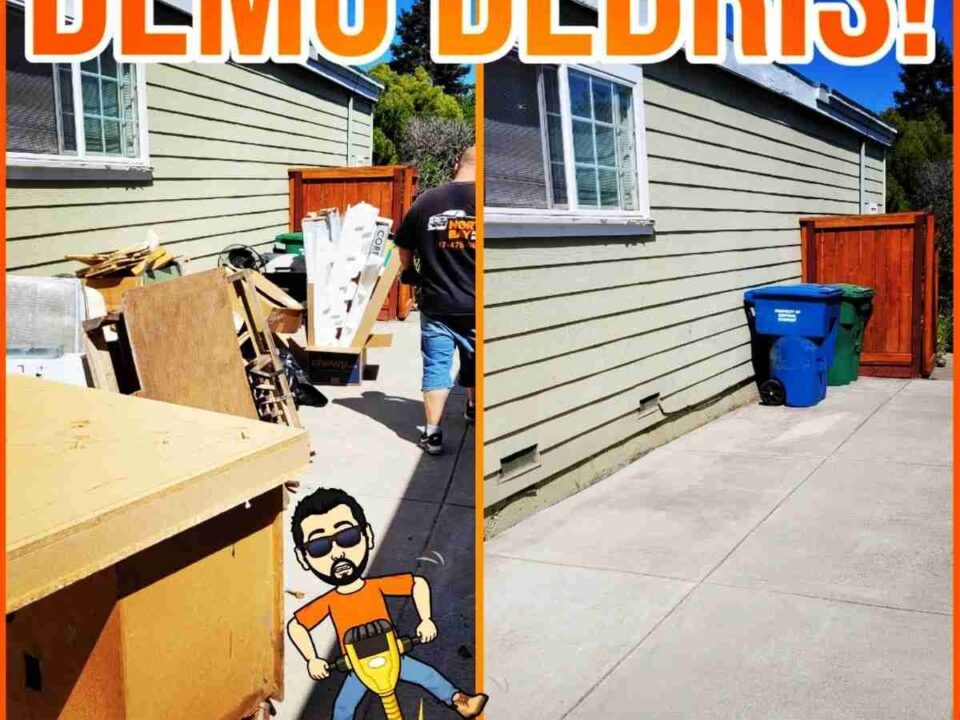
Why Estate Cleanouts Are Important for a Smooth Transition
August 1, 2025Tips for an Easy Attic Cleanout
August 1, 2025Foreclosure Cleanouts: What You Need to Know
When a property goes through foreclosure, it often comes with a history that’s written in its walls, floors, and even closets. Items left behind can range from everyday household goods to broken furniture, piles of trash, or forgotten personal belongings. A foreclosure cleanout is the process of clearing out these contents, restoring the space so it’s ready for the next chapter. It’s not just about tidying up, it’s about making a space livable and marketable again.
Many foreclosed homes have been vacant for months, sometimes even years. That means dust, debris, and damage can accumulate over time. A thorough cleanout addresses all of that—removing what’s no longer needed and preparing the home for repairs or staging. In this process, speed and efficiency matter, but so does a thoughtful approach that ensures the property’s condition improves with each step. A clean space isn’t just visually better—it can mean a stronger market value and a smoother selling process.
The Challenges That Come With Foreclosure Properties
Foreclosure properties can present a wide range of unexpected challenges. Sometimes the space is neatly maintained, while other times it can be a daunting maze of clutter, structural issues, or neglected repairs. You may find rooms filled with broken appliances, damaged flooring, or piles of outdated paperwork. Every cleanout is different, and the unpredictability means preparation is essential.
Beyond the physical mess, there’s an emotional aspect to consider. These properties often have a personal history that’s hard to ignore. Navigating these situations requires not only physical work but also a level of respect for the process. Professionals understand the delicate balance between efficiency and sensitivity. They’re equipped to handle the heavy lifting, the sorting, and the disposal, ensuring the property can be restored without cutting corners. Tackling these challenges head-on means the end result is a property ready for its next use—whether it’s for resale, rental, or renovation.

Why Speed Matters in Foreclosure Cleanouts
Time plays a critical role in foreclosure cleanouts. The longer a property sits unattended, the more deterioration can occur. Moisture damage, pest infestations, and even vandalism can quickly become costly problems. Acting fast can help prevent further decline and reduce the expenses associated with bringing the property back to market-ready condition.
A quick turnaround also benefits real estate agents, banks, and property managers who want to list the property as soon as possible. The sooner the cleanout is done, the sooner repairs, inspections, and marketing efforts can begin. Speed doesn’t mean rushing without care—it’s about having the right tools, the right team, and a clear plan. With a coordinated approach, foreclosure cleanouts can be completed efficiently without sacrificing attention to detail. That balance between urgency and thoroughness is what keeps a property from losing even more value while it sits vacant.
Sorting Through Left-Behind Belongings
One of the most delicate aspects of a foreclosure cleanout is handling the belongings that remain in the home. From boxes of personal items to bulky furniture, there’s often a wide mix of things to sort. Determining what can be salvaged, what should be donated, and what needs to be disposed of is a process that takes both organization and discretion.
It’s not uncommon to find usable items that can benefit local charities or recycling centers. Donating these materials not only reduces landfill waste but also gives them a second life. For anything damaged or unsalvageable, responsible disposal is key. This includes separating out items that may require special handling, such as electronics or hazardous materials. A well-managed sorting process ensures nothing is overlooked, and that the property moves toward being cleared in a way that’s both efficient and environmentally considerate.
The Importance of Proper Disposal and Recycling
Cleaning out a foreclosed property is more than loading up a truck and heading to the landfill. Many items require careful handling to avoid environmental harm. Electronics, paint cans, old batteries, and certain appliances contain materials that can’t be dumped with regular trash. Proper disposal ensures compliance with local regulations and keeps harmful substances out of the soil and waterways.
Recycling plays a big role in this process. From metal fixtures to cardboard boxes, plenty of items found during cleanouts can be repurposed. By separating recyclable materials from general waste, you not only reduce the environmental footprint but may also lower disposal costs. An eco-conscious approach benefits both the property owner and the community. It transforms a messy, abandoned space into something that leaves a positive impact beyond just its four walls.
Safety Precautions During Foreclosure Cleanouts
Foreclosed homes can sometimes hide hazards beneath the surface. Mold, broken glass, exposed nails, and unstable flooring are just a few risks that may be present. That’s why safety precautions are a top priority during a cleanout. Proper protective gear, such as gloves, masks, and sturdy footwear, is essential for anyone working in these conditions.
It’s also important to assess the structure before beginning the process. Weak staircases, loose railings, or damaged ceilings could pose significant risks. A careful walk-through before the heavy lifting begins can prevent accidents. Professionals follow strict safety protocols, not only to protect themselves but also to ensure the property remains intact during the cleanout. By prioritizing safety from the start, the entire process can move forward smoothly, without costly setbacks or injuries.
How Cleanouts Prepare a Home for Sale
A clean, uncluttered property is far more appealing to potential buyers. Foreclosure cleanouts strip away the remnants of previous occupancy, allowing the property’s features to shine. Removing debris and unwanted items creates a blank canvas for real estate professionals to work with. From there, staging, photography, and open houses can take place without distractions.
Cleanouts also make it easier to identify what repairs or upgrades are needed. With the space cleared, contractors can move freely, and inspectors can access every part of the property. This streamlines the selling process, ensuring that nothing is hidden under piles of clutter or damaged furniture. Ultimately, a well-executed cleanout sets the stage for a successful sale, helping the property move from a foreclosed listing to a desirable home on the market.
The Role of Professional Cleanout Services
While it’s possible to tackle a foreclosure cleanout on your own, the scale and complexity of many properties make professional help invaluable. A dedicated cleanout team has the manpower, equipment, and knowledge to handle everything from heavy lifting to safe disposal. They can clear out an entire home in a fraction of the time it might take an individual or small group.
Professionals also bring a level of organization that ensures nothing is missed. Items are sorted efficiently, recyclable materials are separated, and hazardous waste is handled according to regulations. With the right crew, a foreclosure cleanout becomes a seamless process rather than a stressful project. That means less time worrying about logistics and more time focusing on preparing the property for its next chapter.
Budgeting for a Foreclosure Cleanout
The cost of a foreclosure cleanout can vary depending on the size of the property, the volume of items to be removed, and any special disposal requirements. While some might see this as an added expense, it’s actually an investment in the property’s value and marketability. A clean, clutter-free home is more likely to attract buyers quickly and command a better price.
Budgeting should also factor in the time saved by hiring professionals. Faster turnaround means the property can be listed sooner, potentially reducing holding costs like taxes, insurance, and utilities. By viewing the cleanout as part of the overall property preparation process, the cost becomes easier to justify. In many cases, the return on investment far outweighs the upfront expense.
Avoiding Common Mistakes During Cleanouts
Rushing through a foreclosure cleanout without a plan can lead to missed steps and added costs. Skipping safety precautions, failing to separate recyclable materials, or leaving behind items that should have been removed can delay the property’s readiness. Another common mistake is underestimating the time and labor required, which can cause unnecessary stress and expenses.
A well-thought-out approach helps avoid these pitfalls. This means assessing the property beforehand, gathering the necessary tools, and knowing what disposal options are available. If the job seems overwhelming, calling in professionals can save time and prevent mistakes. With the right strategy in place, a foreclosure cleanout becomes a smooth, efficient process rather than a drawn-out challenge.
Conclusion
Clearing out a foreclosed property is a complex but vital step in returning it to a usable and marketable state. From addressing safety hazards to ensuring proper disposal, each stage of the process plays an important role in the outcome. Whether the goal is to sell, rent, or renovate, a thorough cleanout lays the groundwork for a fresh start.
For those who need reliable help, North Bay Junk Removal in Santa Rosa, CA offers expert foreclosure cleanout services designed to save time and ensure every detail is handled with care. Their team can be reached at 707 478 6817 or by email at northbayjunkremoval1@gmail.com for assistance with properties of any size. With their experience, even the most challenging foreclosure cleanouts can be transformed into spaces ready for new opportunities.




